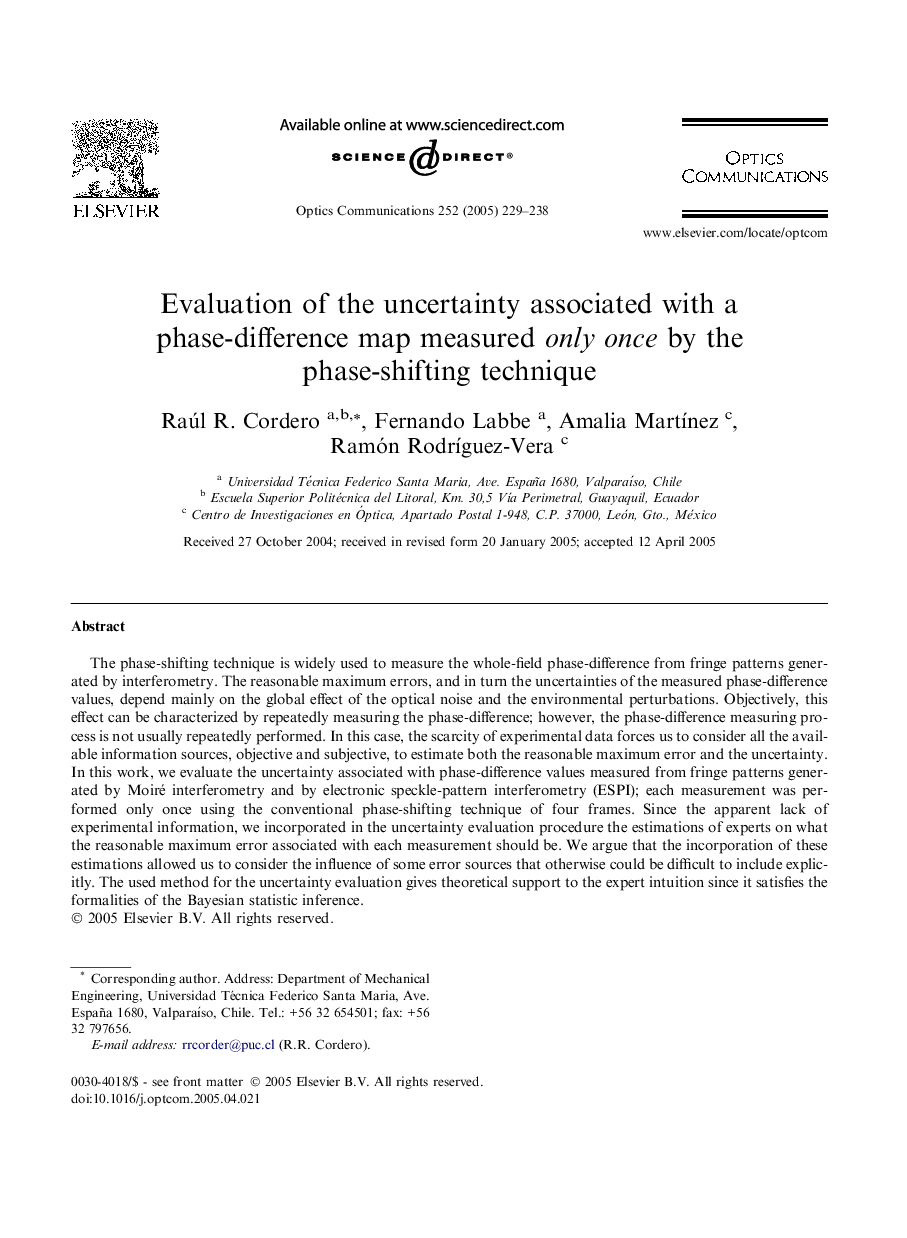| Article ID | Journal | Published Year | Pages | File Type |
|---|---|---|---|---|
| 9785703 | Optics Communications | 2005 | 10 Pages |
Abstract
The phase-shifting technique is widely used to measure the whole-field phase-difference from fringe patterns generated by interferometry. The reasonable maximum errors, and in turn the uncertainties of the measured phase-difference values, depend mainly on the global effect of the optical noise and the environmental perturbations. Objectively, this effect can be characterized by repeatedly measuring the phase-difference; however, the phase-difference measuring process is not usually repeatedly performed. In this case, the scarcity of experimental data forces us to consider all the available information sources, objective and subjective, to estimate both the reasonable maximum error and the uncertainty. In this work, we evaluate the uncertainty associated with phase-difference values measured from fringe patterns generated by Moiré interferometry and by electronic speckle-pattern interferometry (ESPI); each measurement was performed only once using the conventional phase-shifting technique of four frames. Since the apparent lack of experimental information, we incorporated in the uncertainty evaluation procedure the estimations of experts on what the reasonable maximum error associated with each measurement should be. We argue that the incorporation of these estimations allowed us to consider the influence of some error sources that otherwise could be difficult to include explicitly. The used method for the uncertainty evaluation gives theoretical support to the expert intuition since it satisfies the formalities of the Bayesian statistic inference.
Keywords
Related Topics
Physical Sciences and Engineering
Materials Science
Electronic, Optical and Magnetic Materials
Authors
Raúl R. Cordero, Fernando Labbe, Amalia MartÃnez, Ramón RodrÃguez-Vera,
